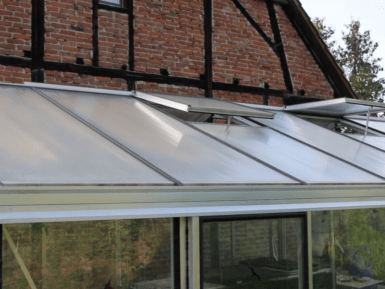
Arduino Nano Matter with headers
Sold outThe Arduino Nano Matter with headers stems from a partnership between Arduino and Silicon Labs® to make Matter®, one of the most popular IoT connectivity standards for smart home devices, accessible to all.
Overview
Nano Matter merges Arduino’s signature ease of use with with the powerful Silicon Labs® MGM240S, wrapping the best of two worlds into one of the smallest form factors currently on the market. Experimenting with Matter-compatible devices has never been easier!
With Nano Matter, makers – at all levels of expertise – can leverage the popular Matter IoT connectivity standard to build interactive solutions, upgrade previous Nano-based projects to fully function as smart home devices, and even experiment with protocols like Zigbee® and OpenThread.
Key benefits include:
- Matter-ready for quick prototyping, thanks to hardware support and a user-friendly software layer.
- Based on the MGM240SD22VNA from Silicon Labs, a 32-bit Arm® Cortex®-M33.
- Secure Vault™ technology: enjoy industry-leading, state-of-the art security from Silicon Labs against escalating IoT threats.
- Multiprotocol connectivity enables 802.15.4 (Thread) and Bluetooth® Low Energy
- Nano-family compact size and pinout.
- Debugging over USB via SWD interface: no external debugging probe needed!
- Low energy consumption, designed for battery powered IoT devices.
Need Help?
Check the Arduino Forum for questions about the Arduino Language or how to make your own Projects with Arduino. If you need any help with your product, please contact the official Arduino User Support through our Contact us page.
 The Matter Color Light will be the only officially Matter-certified profile for the Nano Matter. Currently under certification.
The Matter Color Light will be the only officially Matter-certified profile for the Nano Matter. Currently under certification.
Tech specs
| Microcontroller |
MGM240SD22VNA: 32-bit ARM Cortex®-M33 with DSP instruction and FPU |
Interfaces | I2C SPI UART PWM Digital I/Os ADC (up to 16 bit) DAC |
| Memory |
1536 kB Flash |
Security | Secure Vault® High |
| USB | 1x USB-C connector | Extra | RGB LED User push-buttons |
| Connectivity |
802.15.4 Thread® Bluetooth® Low Energy 5.3 and Bluetooth® Mesh Matter-ready Smart Home Connectivity |
I/O Voltage | 3.3V |
| Antenna | On-board 2.4GHz | Input Voltage (nominal) | 5V |
| Clock Speed | 78 MHZ | Dimensions | 18 mm x 45 mm |
Resources for Safety and Products
Manufacturer Information
The production information includes the address and related details of the product manufacturer.
Arduino S.r.l.
Via Andrea Appiani, 25
Monza, MB, IT, 20900
https://www.arduino.cc/
Responsible Person in the EU
An EU-based economic operator who ensures the product's compliance with the required regulations.
Arduino S.r.l.
Via Andrea Appiani, 25
Monza, MB, IT, 20900
Phone: +39 0113157477
Email: support@arduino.cc
Documentation
Learn more
Get Inspired
Easily monitorize your garden's environment with simple components.

Greenhouses are excellent ways to grow plants due to their compact nature and the fact that they can absorb and store the sun’s light as heat to keep their internal temperature higher than outside. But when it comes to adding ventilation for cooling things down, decreasing the humidity, or simply to avoid rain, most non-commercial ones still rely on someone to manually open or close the windows. This need for automation is what drove Michael Bernhard to create his own greenhouse climate regulation system. This project relies on a Nano Every to read the ambient temperature/humidity as well as control up to six motorized windows via three L298N dual H-bridge drivers. The Nano receives commands and other data over WiFi from an accompanying ESP8266 board for wireless remote control with a mobile phone. Each of these components and their connectors were added to a custom PCB and placed within a simple wooden enclosure to keep moisture out. An LCD at the top shows pertinent information such as the time, temperature, and humidity. The aforementioned WiFi control scheme not only allows for remote control of the windows, but also for the visualization of historical sensors data on a graph. Safety information, including errors and stored EEPROM data, can be viewed on the web application, too. To see more about this project, you can read Bernhard's write-up here on Hackster.io.










